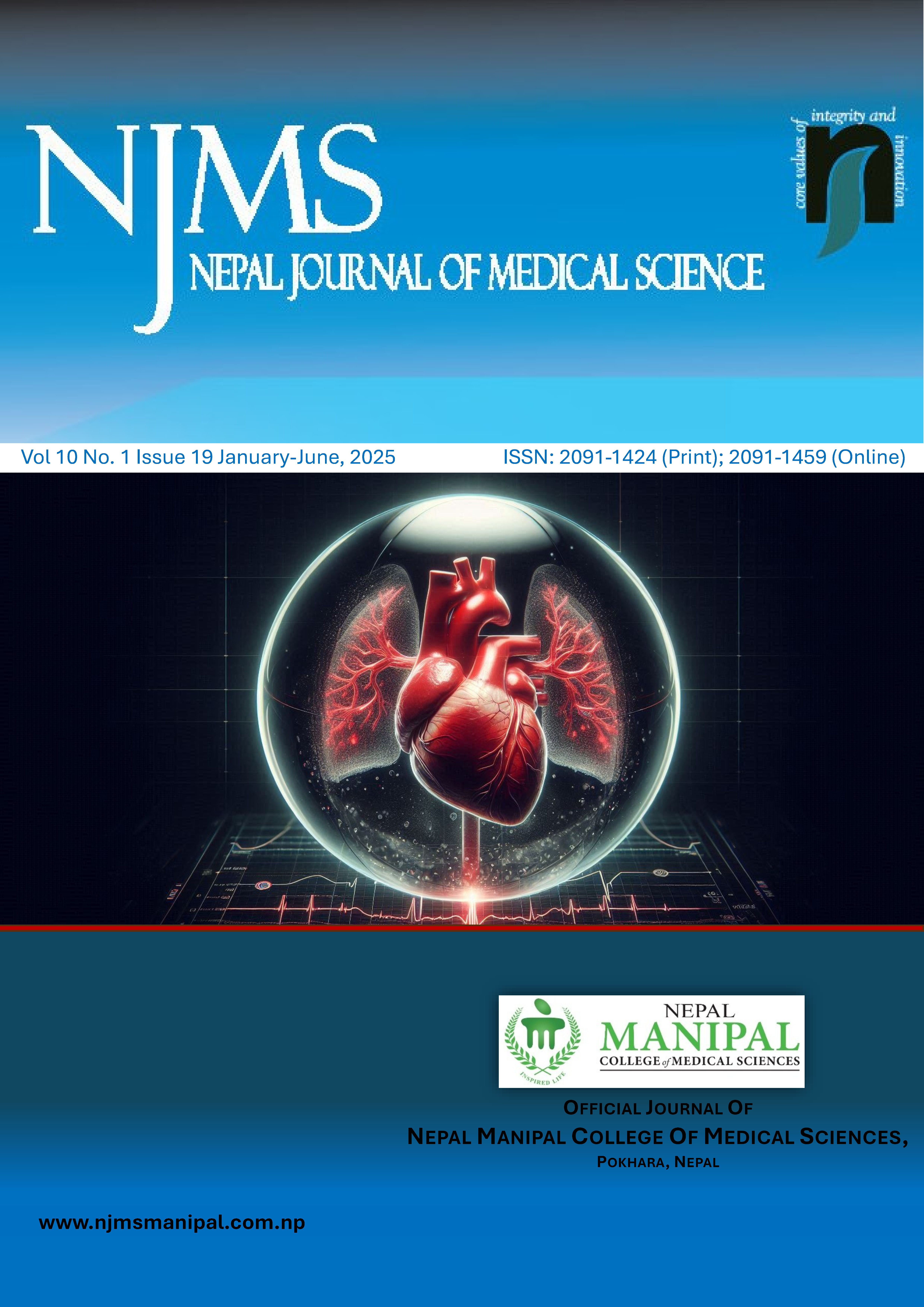Comparison of Tympanoplasty Outcomes in Dry and Wet Ears
Keywords:
Hearing; outcomes; tympanoplastyAbstract
Introduction: Chronic suppurative otitis media is an inflammatory condition of middle ear with a tympanic membrane perforation which is reconstructed by surgical procedure called tympanoplasty. Discharging ear puts a surgeon in dilemma whether to operate or not. Hence this study intends to compare the hearing outcome and graft uptake rate of tympanoplasty performed in dry and wet ears.
Methods: A prospective cross-sectional study design was conducted in the Department of ENT and HNS, Birat Medical Teaching Hospital, Morang over a 6-month period (January 2023 to July 2023). After approval from the Institutional Review Committee (Ref: IRC-PA-261/2023) and an informed written consent, 76 patients were evaluated, out of which 38 patients had dry ear and 38 had wet ear. Preoperative clinical details along with audiogram were recorded. After 3 months of tympanoplasty, otoscopy and audiogram were done to see the graft uptake and hearing improvement respectively. Data were entered into Microsoft Excel and analyzed using SPSS Version 23.
Results: Out of 38 cases with dry ear, graft uptake was seen in 35 cases (92.10%). Similarly, out of 38 cases with wet ear, there was graft uptake in 34 cases (89.47%). Mean preoperative hearing loss in cases with dry ears was 38.41 (±4.75)dB while 43.4(±5.0) dB in wet ears. Mean post-operative hearing loss was 25.6(±2.75) dB in cases with dry ears while 27.5(±2.25) dB in cases with wet ears. Hearing improvement was achieved in 35 (92.10%) in dry ear and 34 (89.47%) in wet ear. Irrespective of dry or wet ear there is significant change in hearing improvement.
Conclusions: There was no difference in graft uptake and significant improvement in hearing irrespective of dry or wet ear. So mucoid ear discharge or wet ear is not a reason to postpone tympanoplasty.
Downloads
Downloads
Published
How to Cite
Issue
Section
License
Copyright (c) 2025 Nepal Journal of Medical Sciences

This work is licensed under a Creative Commons Attribution 4.0 International License.
Copyright © by Nepal Journal of Medical Sciences. The ideas and opinions expressed by authors of articles summarized, quoted, or published in full text in this Journal represents only opinions of authors and do not necessarily reflect the official policy of Nepal Journal of Medical Sciences or the institute with which the author(s) is (are) affiliated, unless so specified.




